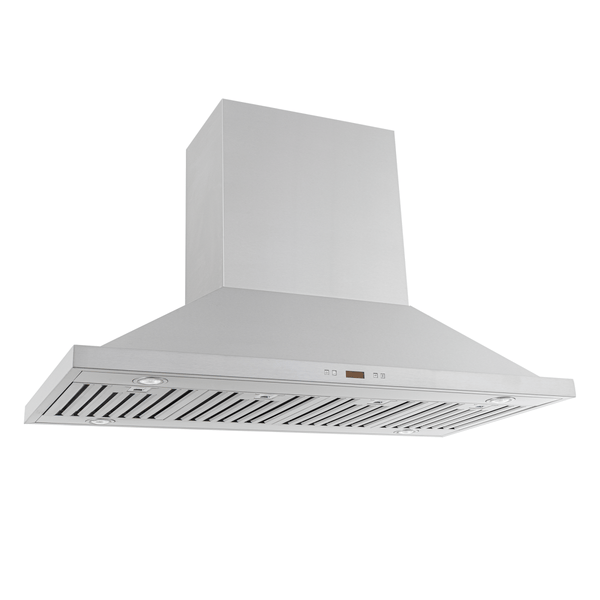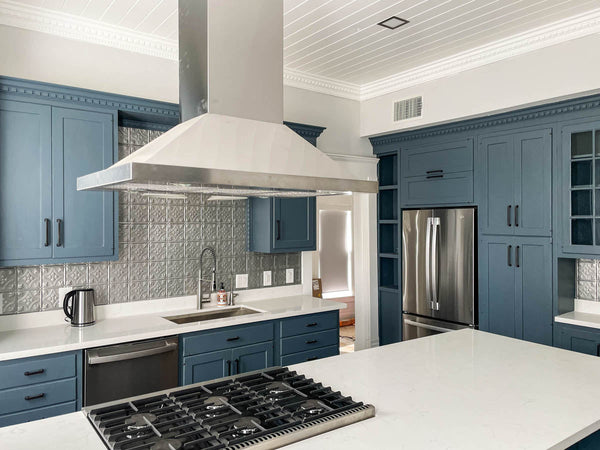Table of Contents
Your kitchen ever turn into smoky chaos when you cook?
That’s why range hoods exist—to clear the air, literally.
But not every kitchen can handle the ideal, full ducted setup. Enter: ductless range hoods. They’re versatile, easier to install, and perfect for any space you don’t have the ability to duct properly.
I’m breaking down how to install a ductless kitchen hood in 8 simple steps. No jargon. No fluff. Just actionable steps to get this done today.
Please keep in mind, each hood is different. See your instruction manual for the exact sequence for your hood model.
Let’s dive in.
What You’ll Need Before You Start
Installing a ductless range hood isn’t rocket science, but having the right tools will save you from a lot of swearing later.
Tools Checklist:
- Measuring tape: For marking out the perfect spot.
- Pencil & level: To keep everything straight.
- Screwdrivers: Flathead and Phillips—trust me, you’ll need both.
- Drill & ⅛-inch bit: For those precise pilot holes.
- Stud finder: Avoid mounting into drywall alone. It’s a disaster waiting to happen.
- Jigsaw: For cutting through any tricky spots.
- Electrical circuit tester: Stay safe while wiring.
Other Essentials:
- Drywall screws (2-inch): For secure mounting.
- Cardboard: Use it as a template (you’ll thank me later).
- Charcoal filter: Required for ductless systems to recirculate clean air.
Step 1: Pick the Perfect Spot
Where you mount your hood matters.
- Height: Most range hoods should sit 28–36 inches above your cooktop. Too low? You’ll bump your head. Too high? It won’t catch the smoke.
- Electric outlet: Ensure there’s a safe, accessible outlet nearby. No extension cords, please.
- Clearance: Double-check cabinet space and wall stability. If it feels flimsy, rethink the spot.
💡 Pro Tip: Check your product manual for exact height and clearance recommendations.
Step 2: Measure Twice, Drill Once
Measurements = sanity.
- Find the center of the wall or cabinet where the hood will sit.
- Use cardboard as a template to trace the hood’s backplate.
- Mark holes for the brackets and screws with a pencil. (mount into the studs!)
Remember, straight lines are your best friend here. Use a level!
Step 3: Prep the Electrical Box
This is where things can get dicey if you’re not careful.
- Cut a small hole in the drywall where your electrical box will sit.
- Pull the circuit wires through.
- Lock the box in place with screws, ensuring it’s snug.
💡 Safety First: Always use an electrical circuit tester to make sure wires aren’t live before working.
Step 4: Wire It Up
Here’s how to connect the wires safely:
- Strip about ½ inch of insulation off each wire.
- Twist wires into a “J” shape. Attach:
- Black wire → brass screw.
- White wire → silver screw.
- Copper wire → green (ground) screw.
- Tighten everything clockwise and tuck the wires into the box.
Boom. You’ve just wired your outlet like a pro.
Step 5: Drill Bracket Holes
It’s time to secure those brackets.
- Use your cardboard template to map out the holes on the wall.
- Drill pilot holes at the marked spots.
- Insert the screws but don’t fully tighten—leave a bit of wiggle room for adjustments.
Step 6: Mount the Range Hood
Lift the hood into place.
- Align it with the brackets and secure it with screws.
- Double-check that it’s level before tightening everything down.
💡 Quick Tip: Use a helper to hold the hood while you secure it. Saves your arms and sanity.
Step 7: Test It Out
Before calling it done, make sure the thing actually works.
- Plug it in.
- Turn it on to check the fan and lights.
If something’s off, double-check your wiring or refer to the manual for troubleshooting.
Step 8: Add Filters
The final touch.
- Install the charcoal filters that came with your hood. These clean the air before recirculating it back into the kitchen.
- Ensure the chimney is firmly attached.
Check out our guide on how to clean and maintain your charcoal filters to keep your ductless range hood running efficiently.
Done. Your kitchen is now smoke-free and ready for action.

FAQs About Installing Ductless Range Hoods
What’s the difference between ducted and ductless range hoods?
Ducted hoods vent air outside, while ductless hoods recirculate air through filters. Learn more about ducted vs. ductless range hoods to make the best choice for your kitchen setup.
Do I need an electrician to install a ductless range hood? A ductless range hood does need an electrician to install if you're not comfortable wiring outlets, hire a pro. Safety first!
How often should I replace the filters in my ductless hood? The filters in your ductless hood should be replaced every 3-6 months, depending on how often you cook.
Can I install a ductless range hood myself? A ductless range hood can be installed by yourself. Absolutely. With the right tools and this guide, you're set.
Is a ductless range hood effective? A ductless range hood is effective, but it's not magic. They work best in smaller kitchens and need regular filter changes to stay efficient.
If you’re looking for options, explore our best ductless range hoods.
Final Thoughts
Installing a ductless range hood isn’t complicated.
With a bit of prep and this guide, you’ll have it up and running in no time.
Say goodbye to smoky kitchens, and hello to cleaner air with a kitchen exhaust fan that fits your lifestyle.
Let’s get to work!












